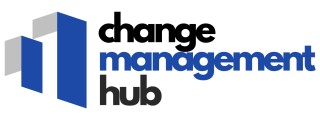-large-teaser.webp)
Understanding Procurement Transformation
Defining the Nuances of Procurement Transformation
Procurement transformation is an intricate process, fundamentally altering how organizations manage their supply activities. Unlike standard upgrades or routine workflow changes, this transformation requires a holistic re-evaluation of the procurement function within a business, effectively reshaping its core processes and capabilities. The goal is to transition from traditional methods to more digital and strategic procurement processes, ultimately fostering cost savings and enhancing performance. At its core, procurement transformation involves a strategic shift in how procurement tasks are handled. It is a move toward integrating digital technologies to streamline processes and improve decision making. This transformation enables organizations to better manage their supply chain, mitigate risks, and optimize sourcing strategies. The change doesn't just enhance current efficiencies but also positions the procurement teams to be more agile and responsive in a dynamic business environment. Significantly, this type of transformation hinges on the ability to leverage data more effectively. By implementing digital procurement strategies, businesses can unlock new insights into their procurement processes. This shift not only aids in strategic sourcing but also amplifies the procurement organization's capability to deliver value across the entire supply chain. Equally important in this context is the alignment of procurement strategies with broader business objectives. Ensuring that procurement transformation aligns with a company’s transformation strategy is vital. Such alignment fosters consistency across various business processes, creating a cohesive and unified direction for the organization. For more insights on navigating the complexities associated with such systemic changes, the detailed exploration available here may provide valuable guidance on structuring a comprehensive transformation roadmap.Key Drivers of Procurement Transformation
Recognizing the Catalysts Behind Procurement Change
In the ever-evolving business landscape, several key factors drive organizations toward procurement transformation. These catalysts underscore the importance of adapting procurement strategies to meet contemporary demands. Understanding these drivers is essential for procurement teams to align their goals with overarching business objectives and remain competitive.- Cost Efficiency: One of the primary motivators for transformation in procurement is the necessity to reduce operational costs. Businesses seek to optimize this area by leveraging digital procurement solutions, which can streamline processes, enhance the procurement function, and promote cost savings without compromising quality.
- Technological Advancements: The ascent of digital technologies has made it imperative for organizations to integrate new tools into their procurement processes. Digital transformation, particularly in procurement technology, empowers businesses to harness data analytics for improved decision making, risk management, and strategic sourcing.
- Supplier and Supply Chain Collaboration: Improved supplier partnerships and supply chain management are vital components of procurement transformation. Strengthening these relationships can lead to increased efficiency and agility, which are essential for navigating complex business environments.
- Changing Market Dynamics: Global market fluctuations and the pressure to remain competitive require a revamp of traditional procurement strategies. Adapting to these changes through strategic sourcing procurement not only enhances performance but also reinforces procurement organization capabilities.
- Regulatory Compliance and Risk Management: Increasing regulatory requirements and the need for comprehensive risk management strategies compel procurement leaders to adopt transformation strategies that ensure compliance and minimize risks. This includes embedding sustainable practices within procurement processes.
Challenges in Implementing Procurement Transformation
Addressing the Hurdles in Procurement Transformation
Embarking on a procurement transformation journey is fraught with challenges, which can hinder progress if not managed effectively. It's crucial to recognize these obstacles early on and develop a strategic approach to address them, ensuring a smoother transition and successful outcomes. One of the primary challenges in implementing procurement transformation is resistance to change. Procurement teams who are accustomed to traditional sourcing and procurement processes may be skeptical about adopting new digital technologies or changes in the workflow. Overcoming this skepticism requires strong change management practices, including clear communication and training to build capabilities and foster acceptance within the procurement organization. Another significant hurdle is aligning transformation strategies with broader business objectives. Procurement leaders need to ensure that their transformation roadmap complements corporate goals, such as cost savings and improved supply chain efficiency. This alignment often demands collaboration across various business units to ensure that the procurement function supports overall organizational performance. Data management and integration present further complexities in the transformation process. The sheer volume of data generated by procurement processes necessitates robust data management systems, enabling effective analysis and decision making. Integrating digital procurement solutions with existing systems ensures seamless data flow and enhances the procurement team's ability to monitor and optimize procurement strategy and performance. Risk management is also a concern, as modifications to procurement processes can introduce uncertainties in the supply chain. A strategic approach is required to identify potential risks early and develop contingency plans to mitigate these risks, ensuring continuity and minimizing disruptions to the sourcing procurement processes. Moreover, technology costs can pose a challenge. While investing in advanced procurement technology can lead to long-term efficiency and cost savings, the initial financial outlay warrants careful consideration. Procurement leaders must evaluate the cost-benefit and prioritize technology investments that align with their transformation strategy. Successfully navigating these challenges requires a well-defined transformation strategy and a commitment to continuous improvement throughout the digital procurement journey.Strategies for Successful Procurement Transformation
Blueprints for Transformation Success
Embarking on a procurement transformation journey requires careful planning and strategic execution. To ensure a seamless transition, procurement organizations must employ a well-defined transformation roadmap. This roadmap should align with the broader business objectives while also addressing the nuances of procurement processes. A critical first step involves establishing clear goals that articulate what the transformation aims to achieve. These objectives might include cost savings, improved efficiency, or enhanced supplier relationships. Once defined, these goals serve as a guiding compass for all subsequent activities. Key strategies to enhance the likelihood of success in procurement transformation include:- Building Strategic Capabilities: Enhance your procurement function by upskilling procurement teams and expanding their digital capabilities. This involves training staff on how to utilize digital technologies effectively, ensuring they can extract value from new procurement systems.
- Data-Driven Decision Making: Leverage data analytics to inform decision-making processes and identify areas of improvement in the supply chain. This approach not only optimizes sourcing procurement strategies but also facilitates comprehensive risk management.
- Fostering a Culture of Innovation: Encourage a culture within the procurement organization that embraces change and innovation. By nurturing a forward-thinking mindset, procurement leaders can drive digital transformation initiatives that elevate procurement processes.
- Technology Integration: Seamlessly integrate procurement technology that enhances the overall performance of procurement tasks. This often involves the adoption of digital procurement platforms that streamline operations and offer real-time insights.
- Collaboration Across Departments: Foster collaboration across various departments to ensure alignment on transformation goals. Cross-functional teams can identify synergies and challenges that may impact the success of the transformation strategy.
The Role of Technology in Procurement Transformation
Leveraging Technological Advancements in Procurement
The adoption of digital technologies is undeniably shaping the future of procurement transformation. Embracing these technologies allows procurement leaders to enhance their processes and improve efficiency across the procurement organization. With the advent of digital procurement, businesses are now able to streamline sourcing activities and better manage their procurement functions.
Digital transformation in procurement involves integrating advanced technologies into the supply chain. This technology-driven approach facilitates strategic decision making and enhances data capabilities. By efficiently analyzing data, businesses can make informed procurement strategies, ultimately leading to significant cost savings.
Procurement technology is essential in improving supplier performance and supply chain tasks. Automation of procurement processes reduces manual errors, lowers costs, and accelerates procurement operations. Moreover, these technologies enable procurement teams to perform risk management effectively, ensuring stability and resilience in the procurement process.
As the transformation roadmap unfolds, organizations that prioritize digital transformation in procurement will likely experience enhanced operational performance and achieve their sourcing procurement objectives. Harnessing technological advancements will undoubtedly position procurement organizations at the forefront of efficiency and innovation in today's competitive market landscape.












